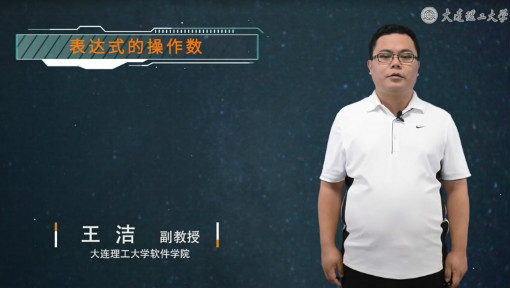
当前课程知识点:Medical Virology > Chapter 4 HIV > 4.2 Replication of HIV > Replication of HIV
返回《Medical Virology》慕课在线视频课程列表
Welcome back.
欢迎回来
In this session,
在本节课中
we will go through the life cycle of HIV.
我们来学习HIV 的生命周期
Many studies have been reviewed the life cycle of HIV.
多项研究对HIV的生命周期进行了说明
Actually,
实际上
the replication of HIV will serve as an example for the other retroviruses.
HIV 的复制过程是逆转录病毒复制的典型例子
The whole cycle involves a series of events:
HIV的整个复制周期包括一系列过程
attachment, fusion and entry,
吸附、融合与进入
uncoating and reverse transcription,
脱壳、逆转录
nuclear entry of cDNA, integration, transcription into RNA,
cDNA进入细胞核、整合、转录成RNA
biosynthesis, assembly, release by budding and maturation.
生物合成、装配、出芽,最终成熟
How does the HIV infection start?
HIV的感染过程如何开始?
First, the gp120 binds to the primary receptor--CD4 molecule,
首先,gp120与主要受体CD4分子结合
and then interacts with a chemokine receptor--CCR5
随后与髓样细胞、记忆性T细胞等
which is found on myeloid cells,
表面的趋化因子受体CCR5
memory T cells, and etc (M-tropic virus).
发生相互作用(病毒呈现巨噬细胞嗜性)
As the infection evolves,
随着感染进程
gp120 mutates and binds to a different chemokine receptor--CXCR4
gp120发生改变,并与T细胞表面的趋化因子受体
which mainly expressed on T cells (T-tropic virus).
CXCR4结合(病毒呈现T淋巴细胞嗜性)
This interaction allows gp41 to fuse with the cell membrane.
接下来gp41与细胞膜发生融合
Now, to prevent HIV infection,
目前预防HIV感染的措施中
CCR5 becomes a good target.
CCR5是一个很好的干预靶点
Some people with CCR5 mutation will resistant to HIV infection.
一些带有CCR5基因突变的人群能抵御HIV的感染
There is a good case for intervention of CCR5 in therapy.
这里介绍一个干预CCR5进行治疗的著名例子
“The Berlin Patient”, Timothy Ray Brown,
“柏林病人”蒂莫西·雷·布朗
the first human cured of HIV, defeated the virus.
是世界上首个被彻底治愈的艾滋病患者
He was a patient with leukemia and HIV infection.
他曾是一名白血病和艾滋病患者
He received a stem cell transplant from a donor
他接受了骨髓干细胞移植治疗
who was homozygous for CCR5 delta32 (a rare mutation in a CCR5 gene).
骨髓捐赠者带有一种罕见的CCR5基因突变(为CCR5-delta32 突变纯合子)
Although the study doesn’t provide a definitive answer,
虽然这项研究没有给出很明确的答案
CCR5 intervention is one of the possible explanations.
但干预CCR5的作用可能是主要原因
There are two articles cited for you to better understand
请同学们阅读以下两篇文献
the procedures and explanations.
以便更好地理解这个治疗过程和相关说明
Now, let’s go through the whole viral life process.
现在,我们继续学习病毒的整个生命周期
1. HIV gp120 binds to CD4 and a chemokine receptor ( CCR5 or CXCR4 )
1. HIV的 gp120结合靶细胞表面的CD4分子和趋化因子受体
on target cells.
CCR5 或者CXCR4
2. The gp41 fuses with the target cell membrane.
2. gp41和靶细胞膜融合
3. Nucleocapsid containing viral genome and enzymes goes into the cells.
3. 带有病毒基因组和酶的核衣壳进入靶细胞
4. Viral genome and enzymes are released after uncoating.
4. 脱壳后,病毒基因组和酶释放
5. Viral reverse transcriptase catalyzes reverse transcription of ssRNA,
5. 病毒ssRNA在逆转录酶催化下逆转录成一条DNA链
forming RNA-DNA hybrids.
形成RNA:DNA中间体
6. Ribonuclease H degrades the original RNA template, thereafter,
6. 中间体中的RNA模板被核糖核酸酶H水解,之后
a second DNA strand is synthesized to generate HIV dsDNA.
另一条DNA链合成,形成HIV dsDNA
a second DNA strand is synthesized to generate HIV dsDNA.
另一条DNA链合成,形成HIV dsDNA
7. Then, dsDNA is translocated to the nucleus and integrated
7. 这时,dsDNA转移到核中,在整合酶的作用下
into the host chromosome by the viral integrase.
整合到宿主细胞染色体中
OK, after the integration ,
整合之后
what will happen?
会发生什么?
1. Transcription factors stimulate transcription of proviral DNA(provirus)
1. 转录因子刺激前病毒DNA进行转录
into genomic ssRNA and several mRNAs.
合成子代基因组ssRNA和一些mRNA
2. Viral RNA is exported to cytoplasm.
2. 子代病毒RNA被转移到胞质中
3. mRNAs are translated into precursor proteins.
3. mRNAs被翻译成前体蛋白
4. The precursors are cleaved into viral proteins.
4. 前体蛋白被裂解成多个病毒蛋白
5. HIV ssRNA and proteins assemble beneath the host-cell membrane,
5. HIV ssRNA和蛋白质在有
where gp41 and gp120 are inserted.
gp41和gp120的宿主细胞膜内面完成装配
6.The newly formed particles bud out, forming the viral envelope.
6.新合成的病毒颗粒通过出芽获得包膜
7. After budding, released viral particles complete maturation eventually.
7.出芽释放后,病毒颗粒完成最后的成熟步骤
At this moment,
现在
we shall follow the short video,
我们一起来看个动画
to further understand the unique replication cycle of HIV.
进一步了解HIV独特的复制周期
We have known that HIV infects the CD4 expressing cells.
HIV可感染CD4表达阳性的细胞
The infection can also become latent,
个体感染HIV后进入潜伏期
or remain unexpressed.
且在很长一段时间内不发病
Macrophages, dendritic cells(DCs) , memory T cells,
巨噬细胞、树突状细胞、记忆T细胞
and hematopoietic stem cells
和造血干细胞
are the major reservoirs for HIV (as Trojan horse).
是HIV重要的细胞储存库(这些细胞像特洛伊木马一样)
So, they can evade host immune response and anti-HIV therapy.
因此,储存库中的病毒可以逃避宿主免疫清除和抗HIV 治疗
Now,
现在
we complete the life cycle,
我们已经学完了HIV的复制周期
there are some exercises for you.
请同学们完成
Fill in the blanks correctly.
下面的一些习题
-Learning Objectives & References
-Assessment Plan of Medical Virology
-To apply basics to clinical case
-1.1 Viral Structure and Composition
--Viral Structure and Composition
--Shapes and relative sizes of viruses
-1.2 Viral Replication
-1.3 Viral Genetics and Classification
--Viral Genetics and Classification
-1.4 Pathogenesis of Viral infection
--Pathogenesis of Viral infection
-1.5 Lab Diagnosis and Host Rsponse to Viral Infection
--Lab Dignosis and Host Rsponse to Viral Infection
-General Virology Quiz
-2.1 Influenza Virus: Biological Properties 1
--Influenza Virus: Biological Properties 1
-2.2 Influenza Virus: Biological Properties 2
--Influenza Virus: Biological Properties 2
-2.3 Influenza Virus: Biological Properties 3
--Influenza Virus: Biological Properties 3
-2.4 Influenza Virus: Lab, Treatment and Prevention
--Influenza Virus: Lab, Treatment and Prevention
-2.5 Paramyxovirus
-2.6 Coronavirus and Rubella virus
--Coronavirus and Rubella virus
-Viruses Transmitted Through Respiratory Route Quiz
-3.1 Diseases Caused by Enteroviruses
--Diseases Caused by Enteroviruses
-3.2 Poliovirus Infection and Viron of Enterovirus
--Poliovirus Infection and Viron of Enterovirus
-3.3 Lab Diagnosis & Prevention of Enterovirus
--Lab Diagnosis & Prevention of Enterovirus
-3.4 Viruses Causing Acute Gastroenteritis
--Viruses Causing Acute Gastroenteritis
-Viruses Transmitted Through Fecal-oral Route Quiz
-4.1 General Properties of HIV
-4.2 Replication of HIV
-4.3 Pathogenesis and Immunity of HIV
--Pathogenesis and Immunity of HIV
-4.4 Epidemiology and Lab Diagnosis of HIV/AIDS
--Epidemiology and Lab Diagnosis of HIV/AIDS
-4.5 Treatment, Prevention and Control of HIV/AIDS
--Treatment, Prevention and Control of HIV/AIDS
-HIV Quiz
-5.1 HSV
--HSV
-5.2 VZV
--VZV
-5.3 EBV, CMV and HHV 6-8
-Herpes Viruses Quiz
-6.1 HAV and HEV
-6.2 HBV, HCV and HDV
-Hepatitis Viruses Quiz
-7.1 Arbovirus
-7.2 Hemorrhagic Fever Virus
-7.3 Rabies Virus
-7.4 HPV
--HPV
-7.5 Prion
--Prion
-Other Important Human Viruses Quiz

